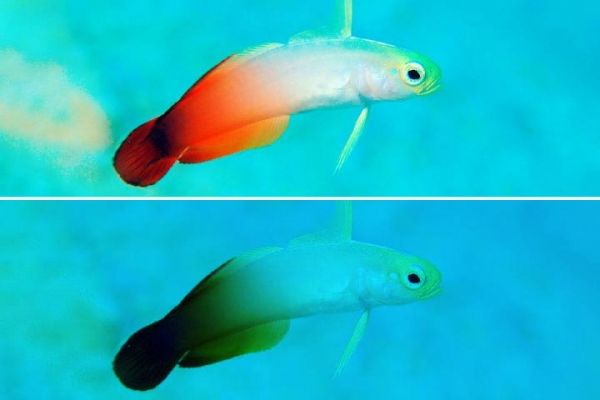Climate change is driving some fish into cooler, deeper waters. Now they may be faced with another challenge: how to make sense of a world drained of color.
When marine biologist Eleanor Caves of the University of Exeter thinks back to her first scuba dives, one of the first things she recalls noticing is that colors seem off underwater. The vivid reds, oranges, purples and yellows she was used to seeing in the sunlit waters near the surface look increasingly dim and drab with depth, and before long the whole ocean loses most of its rainbow leaving nothing but shades of blue.
“The thing that always got me about diving was what happens to people's faces and lips,” said her former Ph.D. adviser Sönke Johnsen, a biology professor at Duke University. “Everybody has a ghastly sallow complexion.”
Which got the researchers to thinking: In the last half-century, some fish have been shifting into deeper waters, and climate change is likely to blame. One study found that fish species off the northeastern coast of the United States descended more than one meter per year between 1968 and 2007, in response to a warming of only about one degree Celsius.
Read more at Duke University
Image: As warming oceans drive fish into cooler, deeper waters, the colors they rely on for survival could become harder to see. A mere 20-meter drop in the water column would make this brightly colored fire goby look noticeably less red. (Credit: Nazir Amin)


